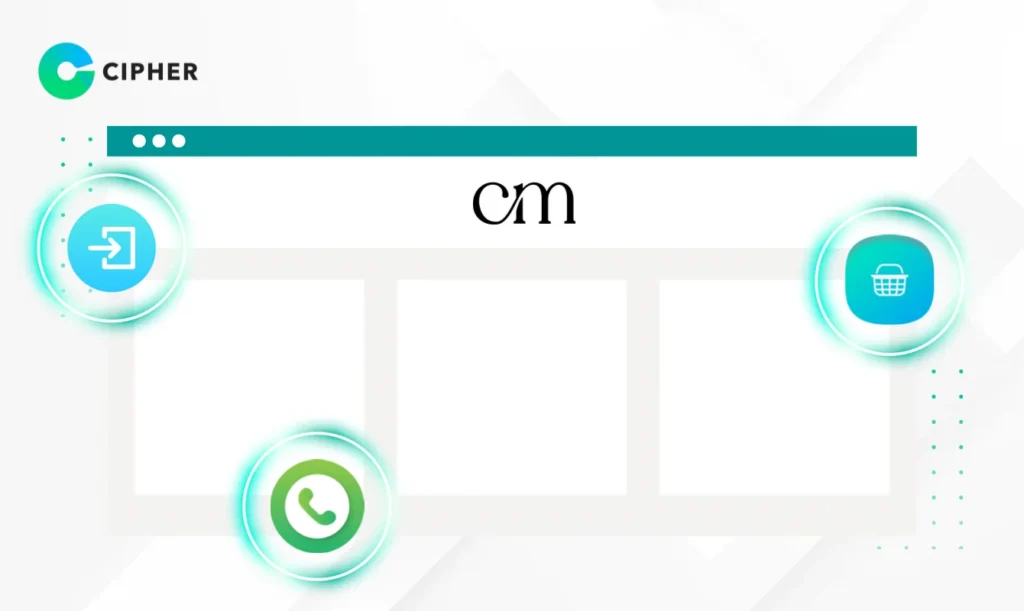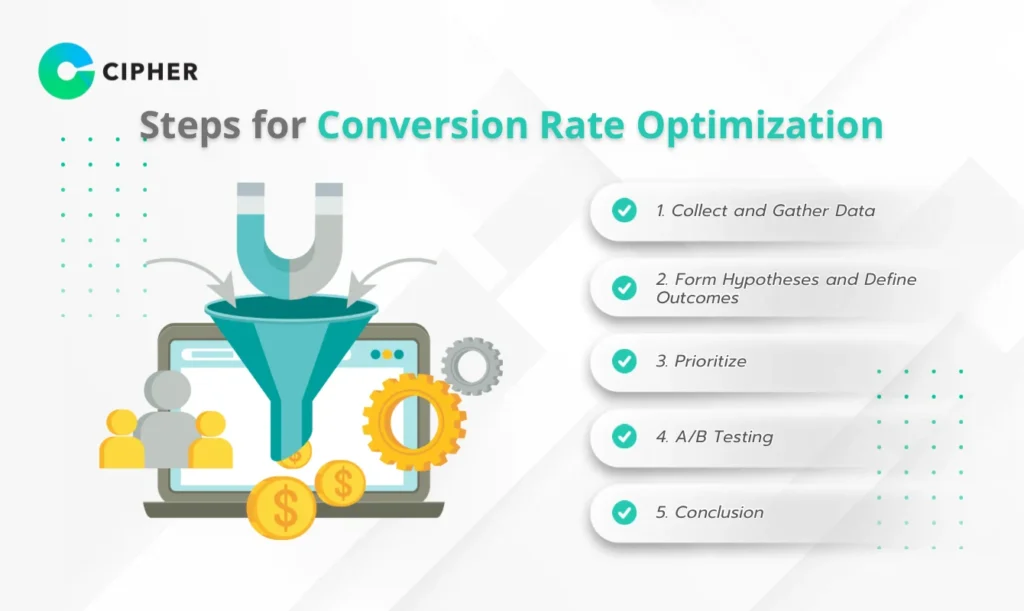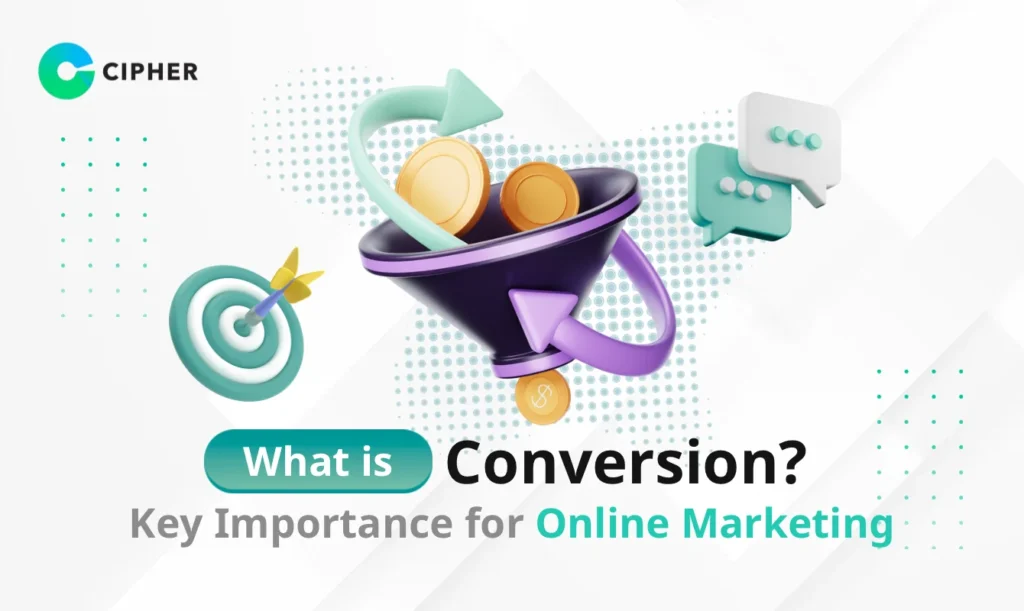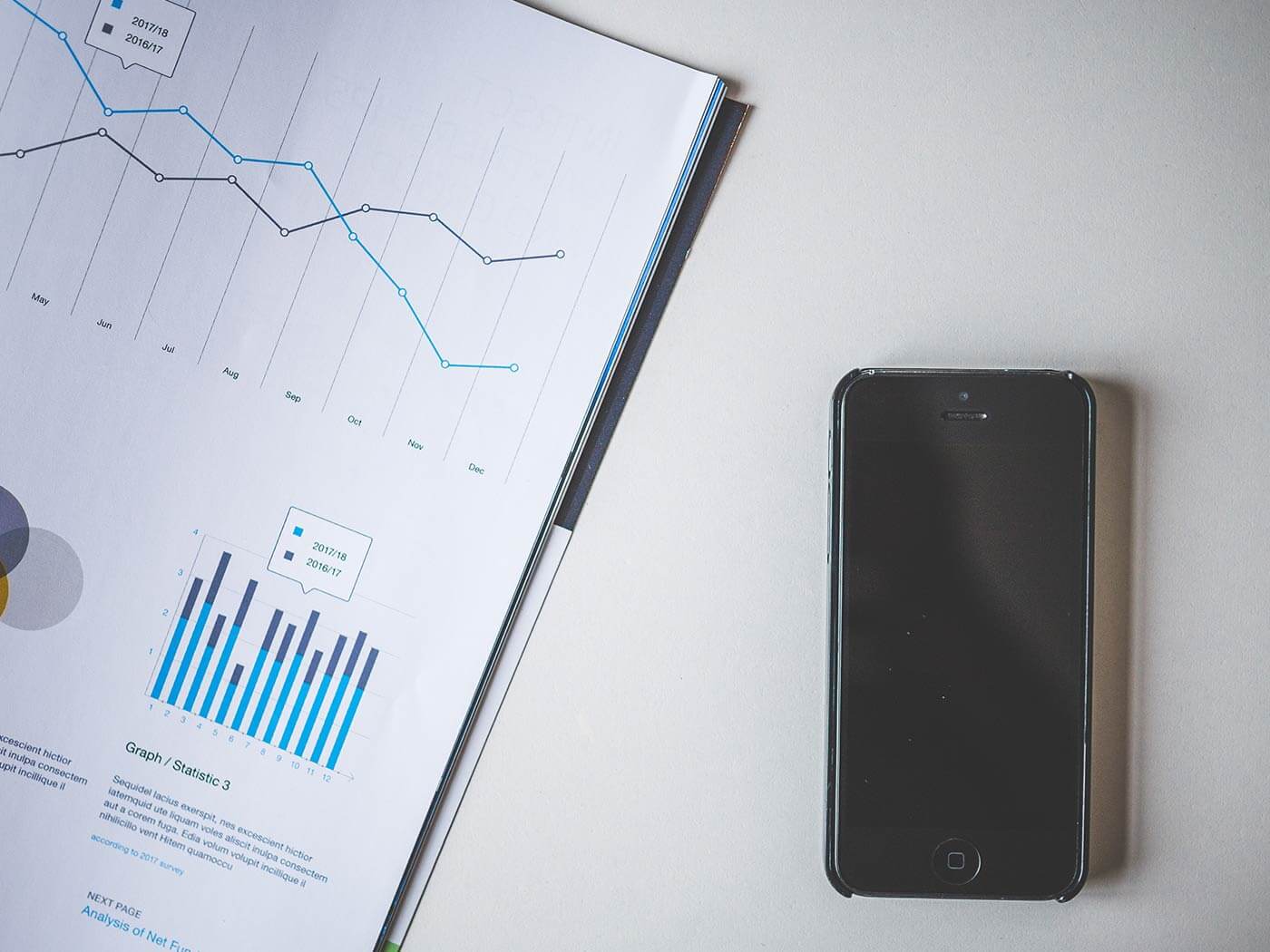If you’re doing online marketing and frequently hear the term “Conversion” but don’t fully understand its true meaning, or wonder why marketers place such importance on it, this article has answers for you. At CIPHER, we understand that today’s online businesses need e fficient Conversion Marketing , and understanding conversion is a fundamental key to making your marketing efforts successful.
Table of Contents
What is Conversion?

Conversion refers to any action taken by users who visit your website or online platform that creates value and benefits for your business according to your set goals. This could be purchasing products, registering for membership, filling out forms, calling to inquire, or even adding items to a cart.
When discussing what conversion is in terms of online marketing, it can be described as a “turning point” that transforms ordinary visitors into customers or leads . Each business may define conversion differently depending on their brand objectives. And certainly, in the highly competitive world of Conversion Marketing, understanding what conversion is will help you strategize effectively, because it’s not just about attracting people to your website, but also making them take the actions you want.
Why is Conversion Important for Online Marketing?
Conversion is the heart of online marketing because it measures whether your marketing plans are effective. Here are three main reasons why conversion is important to marketers:
- Measures Business Success – Conversion indicates whether your online marketing investment is worthwhile. Whether it’s website development or conversion-focused advertising that emphasizes results, we need to know if it’s actually generating profit.
- Understands Customer Behavior – Tracking Website Conversion in various forms helps us see the Customer Journey and understand how they interact with your website, allowing us to improve their experience to better meet their needs.
- Understands Customer Behavior – Tracking Website Conversion in various forms helps us see the Customer Journey and understand how they interact with your website, allowing us to improve their experience to better meet their needs.
The benefits of Conversion Rate also include helping you choose to invest in highly efficient channels instead of wasting budget on ineffective ones, making your Conversion Marketing more efficient and cost-effective. Another benefit of Conversion Rate is that it helps you see the overview of customer behavior and adjust strategies promptly.
How Many Types of Conversion Are There?
Macro Conversion
Macro Conversion refers to the main or ultimate business goals directly related to revenue generation. This is what most businesses want to happen the most. Examples of Macro Conversion include:
- Ordering products on an E-Commerce website
- Paid membership registration
- Filling out forms to request quotes
- Making payments through online systems
Micro Conversion
Micro Conversion refers to small actions that may not directly generate immediate revenue but are important steps leading to Macro Conversion in the future. They are indicators of user interest and engagement. Examples of Micro Conversion include:
- Subscribing to email newsletters
- Following social media pages
- Adding products to carts
- Watching product demonstration videos
- Reading articles on the website
Understanding both Macro and Micro Conversions will help you develop comprehensive Conversion Marketing strategies, not just focusing on sales alone but also considering long-term customer relationship building
Steps for Conversion Rate Optimization

1. Collect and Gather Data
The first step in Conversion Rate Optimization is conducting thorough research by collecting data from multiple sources, whether it’s Google Analytics, Heat Maps, or customer behavior data, to understand what’s happening on your website, where users are having problems, and which points are preventing them from converting.
Understanding the Customer Journey at each step is important because it helps you see where customers drop off in the buying process.
2. Form Hypotheses and Define Outcomes
After gathering data, the next step in Conversion Rate Optimization is forming hypotheses about what could be improved and how it will impact results. For example, “Adding reviews from real customers will increase the order rate by 7%” or “Reducing form fields will increase registration rate by 15%.”
Good hypotheses must be based on real data, not just feelings, and must be clearly measurable. Conversion Rate means the proportion of users who complete your defined goals compared to the total number of visitors.
3. Prioritize
In Conversion Rate Optimization, you may find many issues that need improvement, but you can’t fix everything at once, so you need to prioritize which points to address first.
Consider factors such as ease of implementation, expected impact, and required resources. Points that have the highest chance of increasing Conversion while using the least resources should be prioritized.
4. A/B Testing
A/B Testing is the heart of Conversion Rate Optimization, comparing the performance between the original version and an improved version by dividing visitors equally into two groups, with one group seeing version A and another seeing version B.
Elements commonly tested include headings, images, colors, CTA text, button positions, forms, or even page structure. The results will tell you which version produces a better Conversion Rate.
5. Conclusion
The final step of Conversion Rate Optimization is analyzing test results and implementing them further. Whether the results meet expectations or not, every test provides valuable information.
If the changes improve the Conversion Rate, implement them for real, and if they don’t work, analyze the data to improve hypotheses and continue testing. CRO is an ongoing process with no end.
Techniques to Increase Conversion for E-Commerce Business Websites
In today’s highly competitive online landscape, Conversion is something E-Commerce businesses must pay special attention to. Here are techniques to help increase Website Conversion for your trustworthy website :
Website Speed and Loading Time
Just a 1-second delay in page loading can reduce the Conversion Rate by up to 7%. Today’s customers have no patience for slow-loading websites and will often leave immediately if they have to wait too long.
Factors that slow down websites may include large images, too many effects, automatically loaded videos, or unnecessary plugins. Reducing image file sizes, using CDN services, and selecting only necessary plugins will help your website load faster.
Clear Display of Prices and Shipping Costs
Reviews from Real Customers
Social Proof has a significant influence on purchasing decisions. Conversion will increase when you display reviews from real customers, which helps build credibility for your online store.
Good reviews should come from real customers, include names and photos (if possible), and should have both positive and constructive reviews to show that your store is open to all forms of feedback. This is another way to increase Facebook Conversion by using real customer reviews in Facebook ads to build credibility.
Promotions and Discount Codes
Promotions and discounts are important incentives in purchasing decisions. Facebook Conversion involves using promotions in advertising to increase conversion opportunities.
Effective promotions include free shipping, discounts when purchasing above a certain amount, discount codes for first-time purchases, or limited-time Flash Sales that create urgency for customers to decide faster. Using promotions wisely is a key strategy in high-performance Conversion advertising.
How to Measure Conversion Rate?
Once we understand what Conversion is, the next step is measuring how successful our website or campaigns are. Conversion Rate is the key indicator in this matter.
Conversion Rate means the rate at which data changes into business results, calculated using the formula:
Conversion Rate = (Total number of Conversions / Total number of visitors) x 100
For example, if your website has 1,000 visitors and 30 people make purchases, your Conversion Rate is 3%.
For Conversion advertising on Facebook or Google Ads, you can view Conversion Rate data directly from those platforms, or use tools like Google Analytics to track and analyze target customer behavior in detail.
The important benefit of Conversion Rate is that it gives you an overview of how well your marketing is performing and what areas need improvement. A good conversion rate varies by industry but is generally around 2-5% for E-Commerce. Conversion advertising also helps you measure marketing return on investment (ROI) clearly.
Increase Your Website's Conversion with Services from CIPHER
At CIPHER, we specialize in increasing Conversion. With extensive experience in marketing and Conversion Marketing , we are ready to elevate your online business.
Our services cover:
- Inbound Marketing — Attract potential customers interested in your products and create good experiences throughout the Customer Journey
- Social Media Marketing — Increase engagement and brand awareness on major social media platforms. Facebook Conversion is our expertise.
- E-Commerce Development — E-Commerce website development services that are easy to use, secure, and have high Conversion Rates.
- SEO — Optimize your website to rank on Google to increase quality traffic.
If you’re looking for a partner to help increase Conversion Rate, CIPHER can do it well. With our experienced professional team, we are ready to plan Conversion Marketing strategies specifically tailored to your business.
Conclusion
Conversion is the heart of online marketing that helps you measure success and improve strategies effectively. Whether it’s Macro Conversion like purchasing or Micro Conversion like newsletter subscriptions, all are important in driving business.
Understanding what Conversion Rate is and how to increase Conversion will help your business grow sustainably in the highly competitive online world. Start measuring and improving your Website Conversion today for better business results tomorrow! Contact CIPHER to consult about Conversion Marketing strategies suitable for your business.
Frequently Asked Questions
What is a good Conversion Rate?
It depends on the type of business, generally:
- E-Commerce: 1-4%
- SaaS: 3-5%
- Informational websites: 5-10%
- Landing Pages: 10-20%
The important thing is to measure continuously and try to improve compared to your own performance.
What is Facebook Conversion? How is it different from other ad formats?
Does Conversion Rate Optimization require a large budget?
Not necessarily. It can be done at any budget level. Budget-friendly methods include:
- Using Google Analytics (free)
- Simple A/B Testing
- Customer surveys
- Improving website speed and mobile display
Small businesses can start with basic methods and still get good results.
How to track and measure Website Conversion?
Recommended tools:
- Google Analytics: Set up Goals to measure Conversion
- Heat Maps (Hotjar, Crazy Egg): View user behavior
- Facebook Pixel/Google Conversion Tracking: Measure ad performance
- CRO platforms (Optimizely, VWO): Perform A/B Testing
You should set clear goals, track both Macro and Micro Conversions, and analyze data regularly.





